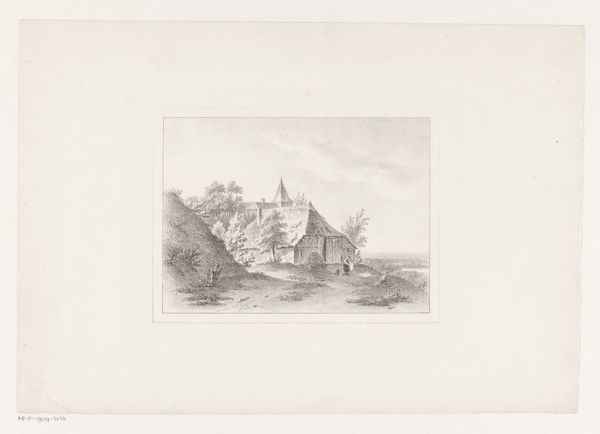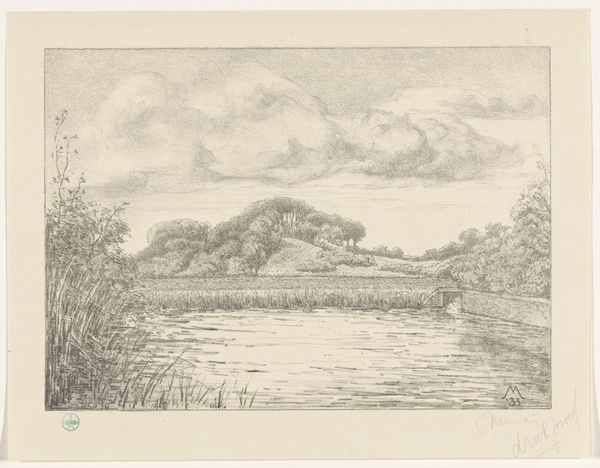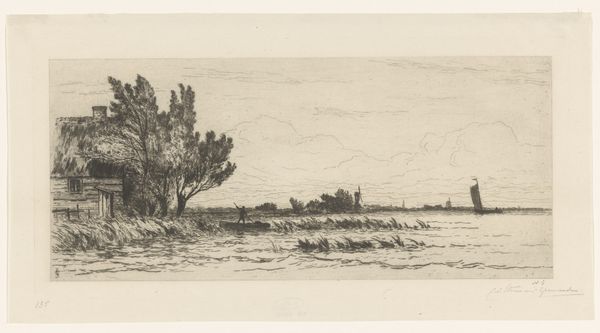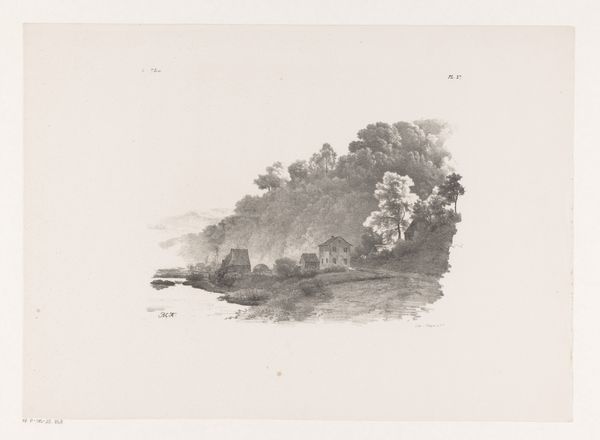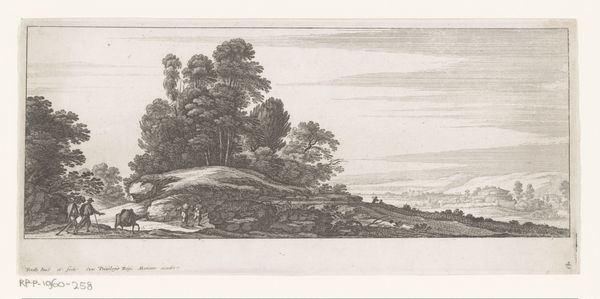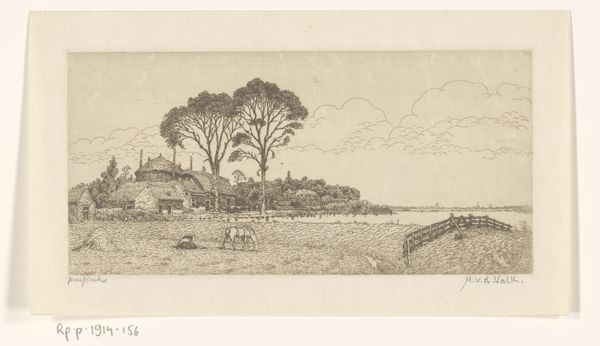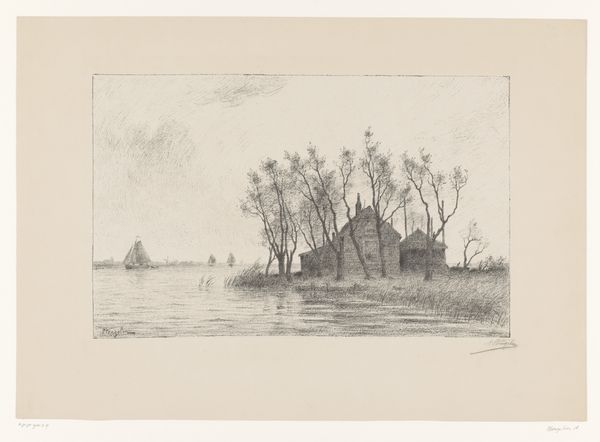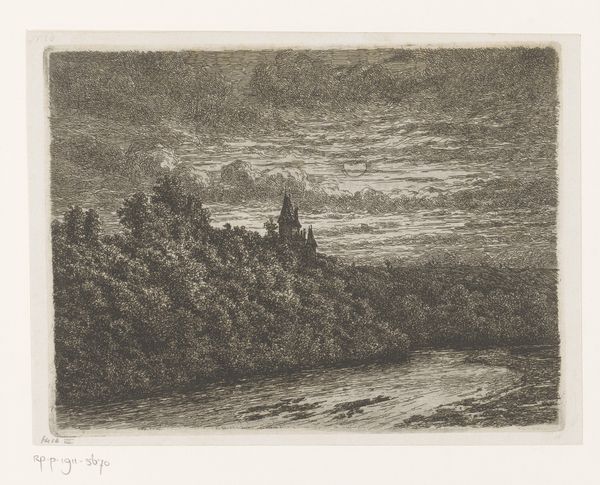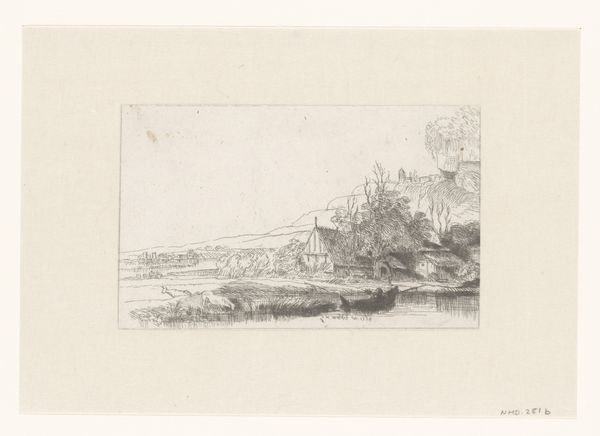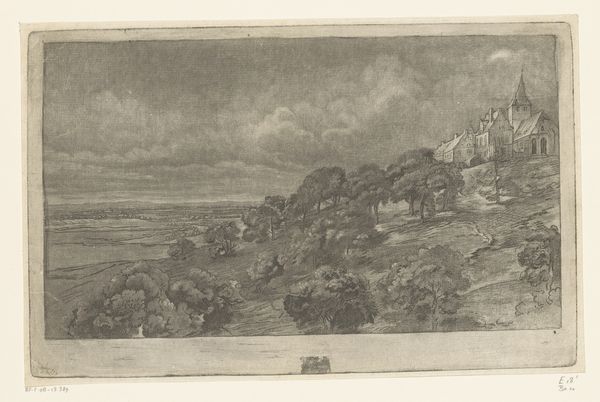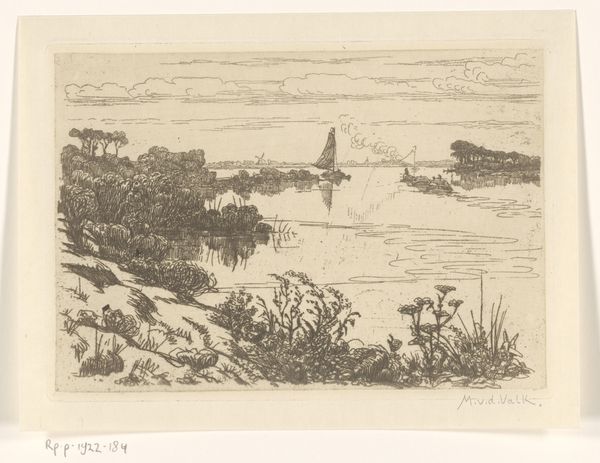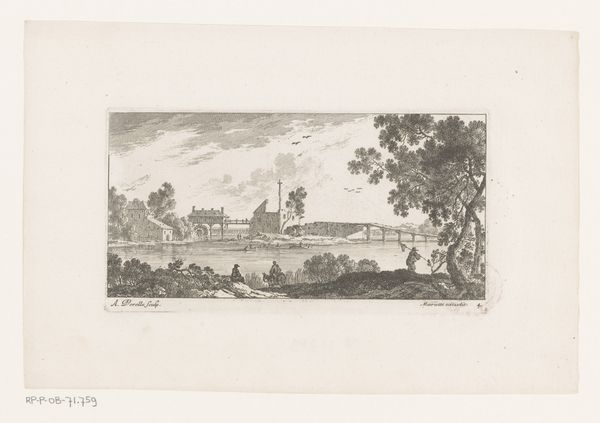
drawing, pencil
#
drawing
#
pencil sketch
#
landscape
#
pencil
#
cityscape
#
realism
Dimensions: height 228 mm, width 335 mm
Copyright: Rijks Museum: Open Domain
Curator: Looking at Simon Moulijn's "Gezicht op bastion Promers," dated 1933, what immediately strikes you? It’s rendered simply in pencil, now held in the Rijksmuseum collection. Editor: There's a strong feeling of stability, almost imposing strength. That low horizon line and the bulk of the bastion dominating the lower half of the picture give it a grounded presence. I imagine this place as steadfast, protective, enduring. Curator: That feeling makes sense, given that city fortifications historically played this important role for safety and defense. The Bastion Promers, presumably in a Dutch setting given Moulijn’s background, would have literally shaped the city's response to outside forces, reflecting its social and political realities. Editor: And the visual language backs that up. The geometry of the bastion contrasts starkly with the soft, almost dreamlike quality of the landscape behind it—the hazy sky, the trees clustered around what appears to be a church spire. It suggests a sanctuary, nestled securely within that imposing wall. The clouds evoke an age of faith too. Curator: That soft rendering reflects shifts in attitudes, as such structures transitioned from active military sites to cultural landmarks and heritage locations. As urban development encroached, they carried an elevated cultural, nostalgic appeal. Editor: So, seeing the bastion, for a Dutch observer it might also summon images of resilience? Curator: Precisely! The pencil medium reinforces this too; think of it as a readily available means of chronicling an ever-evolving urban sphere. Pencil marks allow precision, perfect for depicting the built form, and spontaneity to reflect personal responses to an increasingly impersonal society. Editor: Interesting. It's a fascinating dance between a formidable defensive structure and the subtle humanizing touches around it, capturing memory and feelings about the Dutch homeland in that period. Curator: I think that's wonderfully put, this quiet but deeply resonant image provides an insightful entry point for thinking about landscape, iconography and cultural change. Editor: Definitely, this work encourages one to see the subtle layers of meaning in these built structures and the evolution of its emotional weight across eras.
Comments
No comments
Be the first to comment and join the conversation on the ultimate creative platform.
